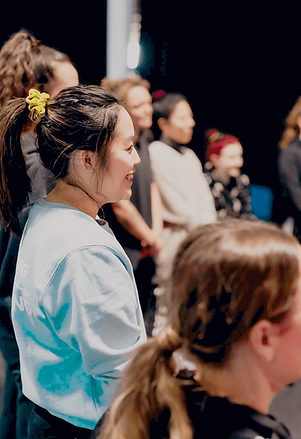Anterior Knee Pain: How to Self-Assess and Improve Your Dance Performance
- Beth Shum
- May 12
- 3 min read
Updated: Sep 8
Anterior knee pain refers to discomfort at the front of the knee, often vague and hard to pinpoint. It’s a common complaint, especially among active individuals, and while the term sounds generic, the causes can be surprisingly complex.
The knee may seem like a simple joint that bends and straightens, but multiple muscles, tendons, and biomechanical patterns influence it. That’s why a proper assessment is crucial before jumping into treatment.

🔍 Step 1: Self-Assessment for Strength Imbalance
Before diving into exercises, we recommend a quick self-assessment using just a chair:
Sit on a chair with your knees at 90°.
Cross your arms over your chest.
Perform single-leg sit-to-stands.
Count how many reps you can do until your quads burn.
Compare both sides.
If one leg can only do 5 reps while the other can do 12, there's a clear strength deficit—and it’s time to take action.
🧠 Why Quad Strength Matters
Your quadriceps consist of three main muscles that converge just below the kneecap. They’re essential in absorbing load, especially during squatting, stepping, or jumping. When these muscles are weak, the patellar tendon is forced to take on extra load, and tendons have a limited tolerance before they become painful.
🏋️♀️ Exercise Progression to Build Strength
✅ 1. Split Squat (Focus on the Weaker Leg)
Position: Weaker leg forward, stronger leg behind.
Movement: Lower slowly, then rise quickly to fire the quads.
Tip: Place hands on hips or hold lightly for balance.
✅ 2. Banded Single Leg Squat (Form Correction)
Loop a resistance band around your knee.
The band adds tension to stop your knee from collapsing inward.
I'd like you to focus on keeping the knee aligned over the toes.
This is a fantastic way to correct faulty movement patterns and improve knee stability.
✅ 3. Step-Ups on an Unstable Surface
Use a Bosu ball, a stack of books, or a sturdy step.
Step up using your weaker leg, lock the knee, and step down.
Repeat without letting the opposite foot fully rest on the ground.
Unstable surfaces force your knee to stabilize under load—a great way to build functional strength.
🪑 Isometric Wall Sit (Double-Leg Work)
Don’t let one leg do all the work! Include double-leg exercises to ensure symmetrical development.
Slide down a wall until your thighs are parallel to the floor.
Hold as long as you can before your muscles burn.
Repeat 3 sets at 80% of your max hold time.
🏋️♂️ Spanish Squat: Tendon-Targeted Strengthening
Looking for a high-impact, tendon-loading drill? Try the Spanish squat.
Loop a resistance band behind your knees and anchor it.
Lean back into the band and perform slow, controlled squats.
You’ll feel a deep load in your quads—that’s the tendon working.
Aim for 8–10 reps until you feel a burn.
🦘 Bonus Tip: Plyometrics (Optional)
Once you’ve built strength, gradually add plyometric movements (light hops, jumps) to promote tendon health and dynamic control. This isn’t covered in-depth here, but it’s worth exploring once you’re pain-free.
🧠 Final Thoughts
Anterior knee pain doesn’t have to become chronic. By identifying muscle imbalances and progressing through smart, structured exercises, you can regain strength, correct form, and even prevent the pain from coming back.
Try these exercises at home—and listen to your body. If pain persists or worsens, consult a physiotherapist for a tailored assessment.
Visit www.fmphysio.com or follow us on Instagram @flexibility_matters




.png)





Comments